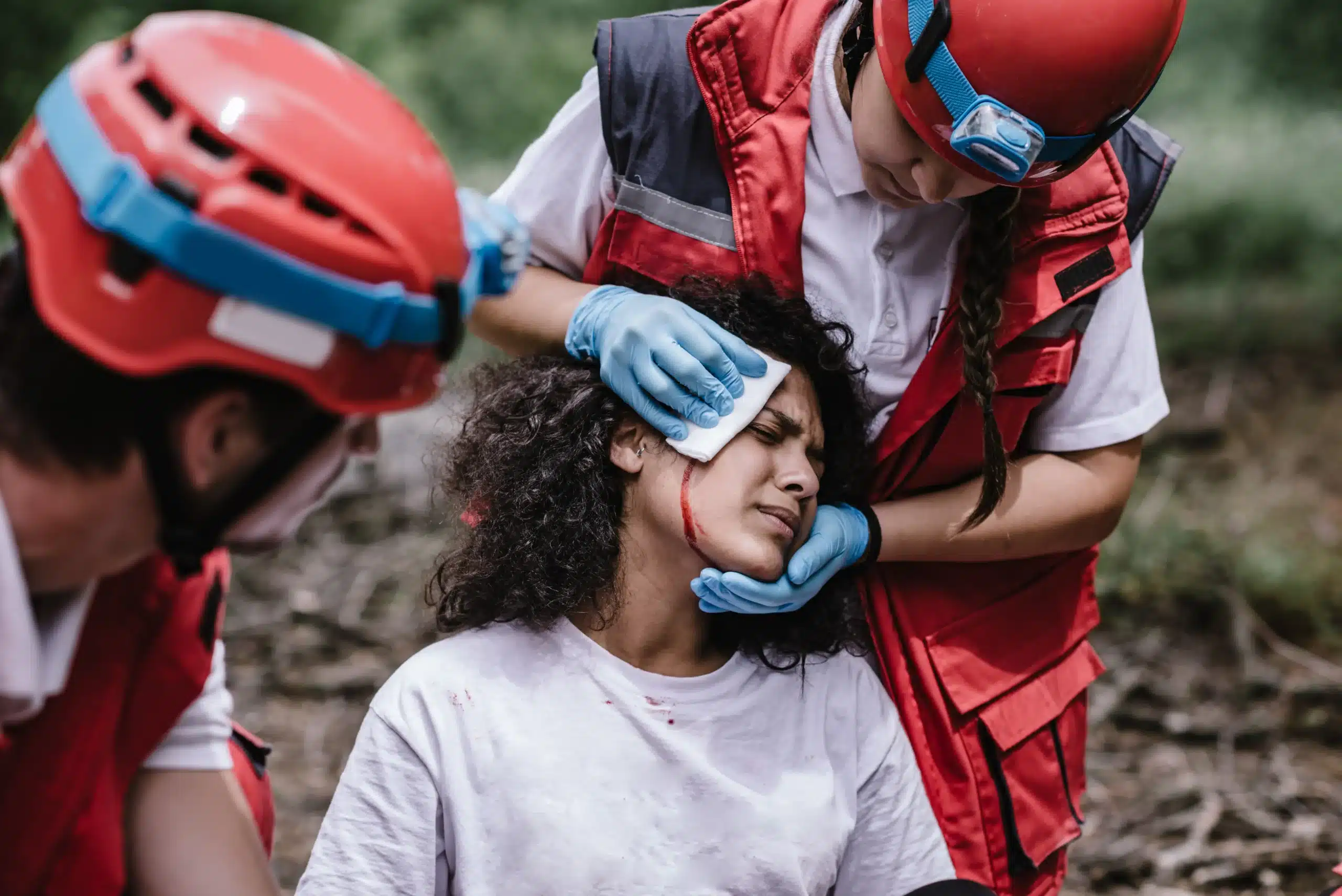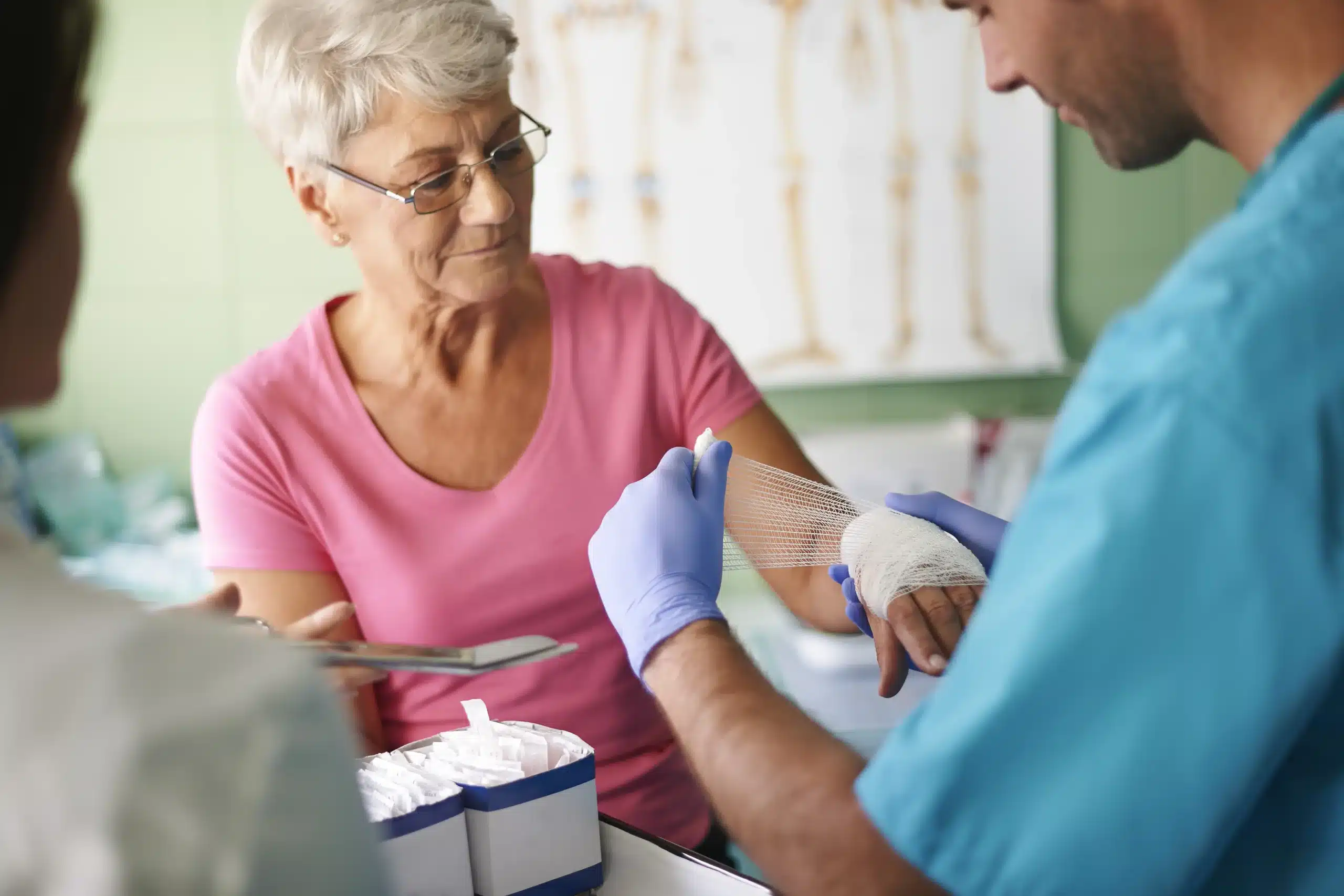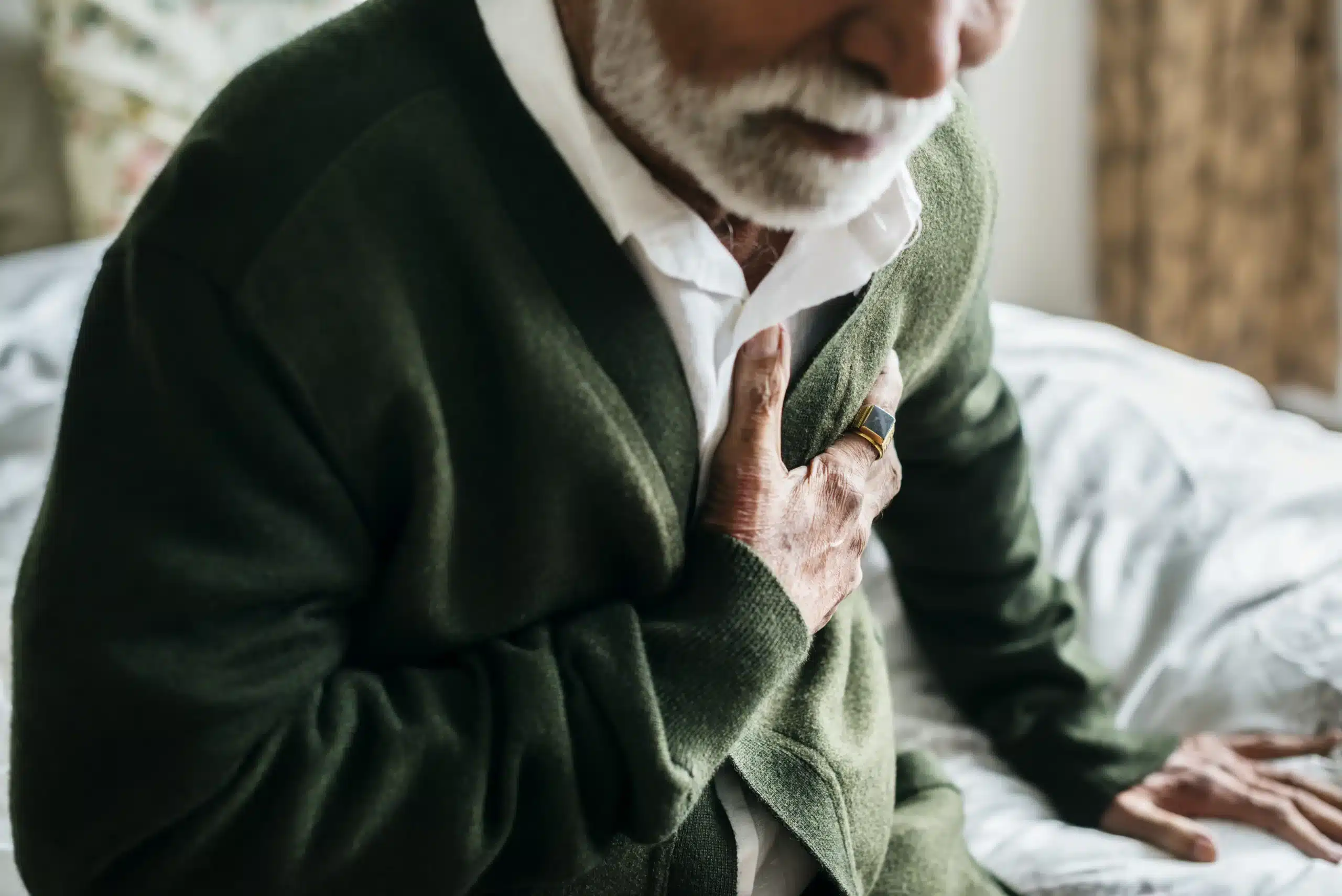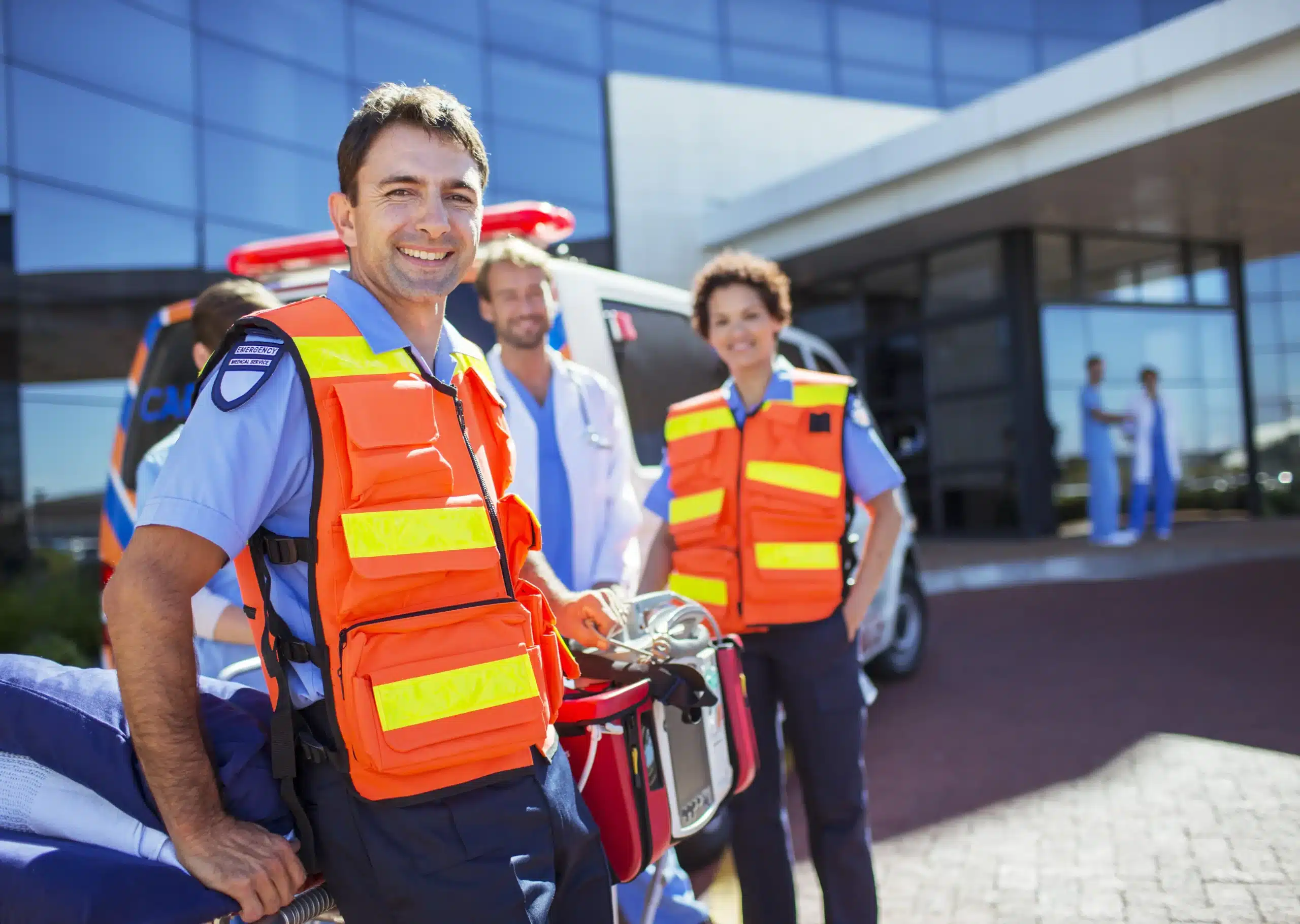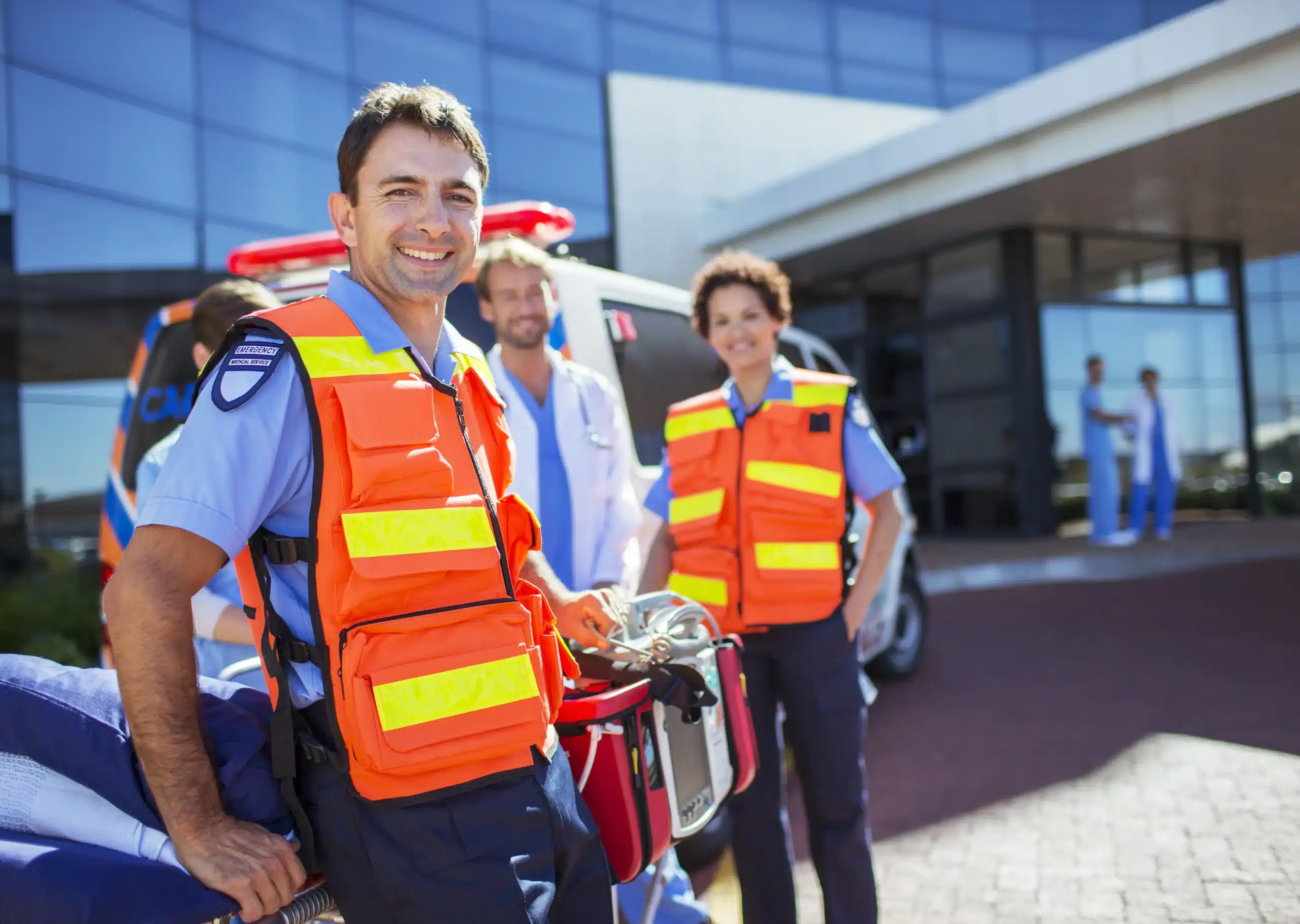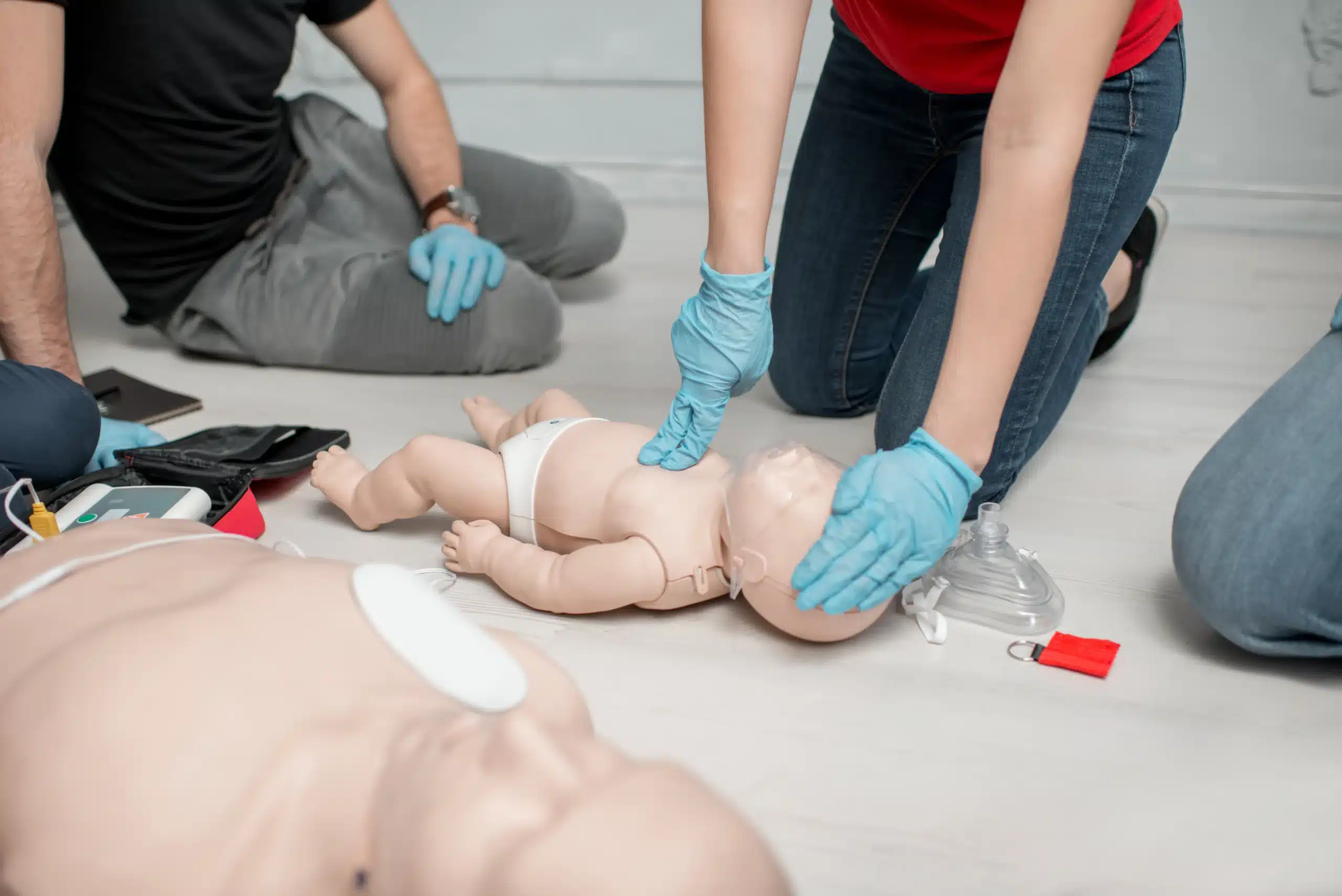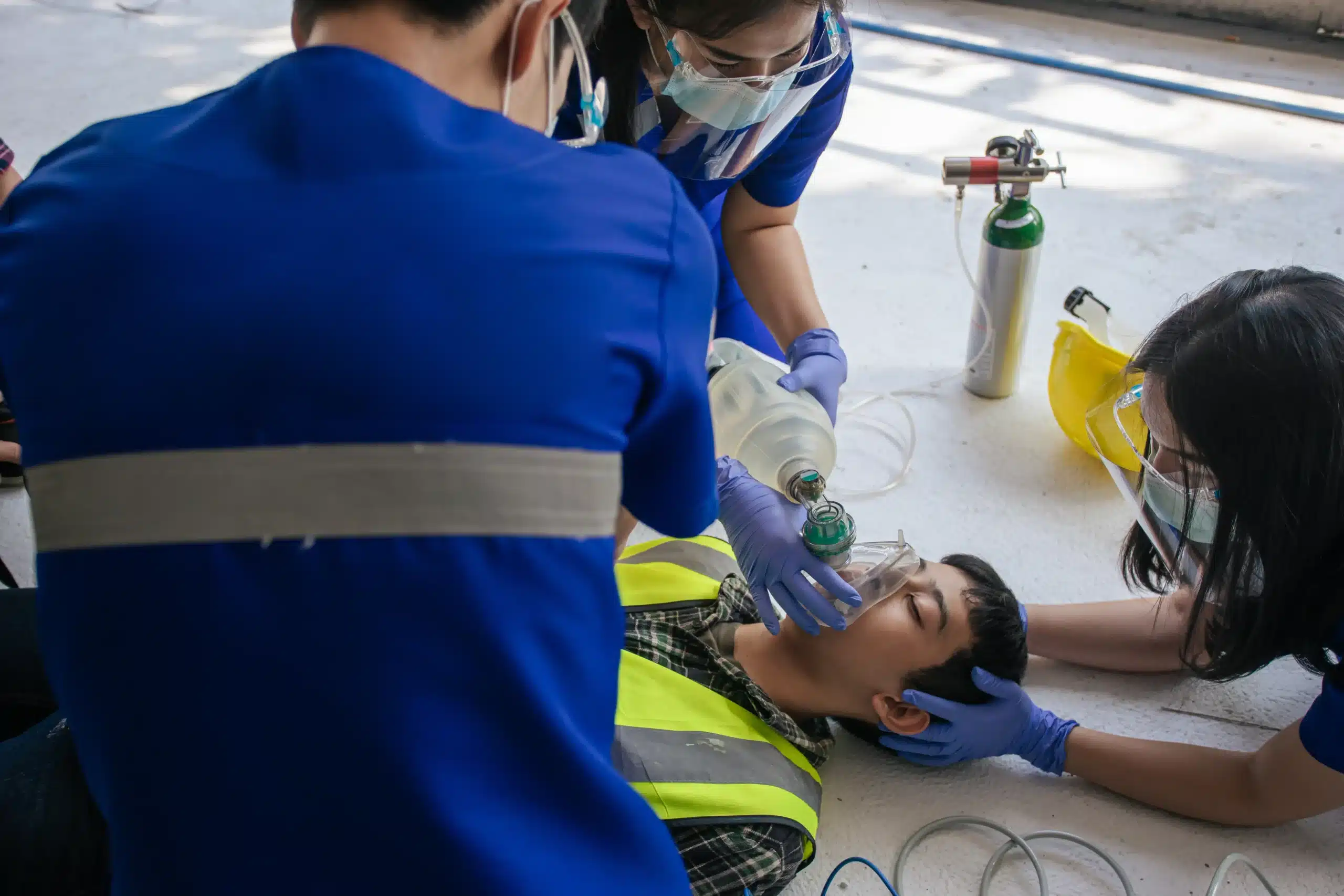In a world where the unexpected can happen at any moment, having the skills to respond effectively in a medical emergency can make all the difference. BLS certification—Basic Life Support—equips you with the knowledge and techniques to provide immediate care during critical situations. From performing CPR and using an AED to managing airways and recognizing the signs of a stroke, BLS training empowers you to act confidently when seconds count. This comprehensive guide explores everything you need to know about BLS certification, including the skills you’ll learn, who can benefit from training, and how to find “BLS certification near me.” We’ll also delve into the various training options available, from in-person classes to online courses, and discuss the process of obtaining and maintaining your certification.
Key Takeaways
- BLS certification is for everyone: Whether you’re a healthcare professional, a teacher, a parent, or simply someone who wants to be prepared, BLS training equips you with essential life-saving skills applicable in any emergency.
- Choose the right BLS course format: In-person, online, and hybrid learning options offer flexibility to fit your schedule and learning preferences. Consider factors like accreditation, instructor qualifications, and the availability of practice resources.
- Maintain your skills through regular practice: Renewing your BLS certification every two years is essential, but ongoing practice is key to staying sharp and confident in your ability to respond effectively in a crisis.
What is BLS Certification & Why Does it Matter?
BLS certification—Basic Life Support—is a nationally recognized credential that signifies your readiness to provide immediate care during medical emergencies. It’s more than just a piece of paper; it’s proof that you possess the skills and knowledge to potentially save a life. This certification is critical for responding effectively in emergencies, acting as your personal toolkit for handling crises like heart attacks, strokes, choking incidents, and other life-threatening situations. BLS equips you to provide crucial support until professional medical help arrives. For more information on the importance of BLS, check out this article on common myths about BLS certification.
BLS Training: Skills You’ll Learn
In a BLS course, you’ll gain hands-on training in essential lifesaving techniques. You’ll learn how to perform high-quality CPR for adults, children, and infants, mastering chest compressions and rescue breaths. The course also covers the proper use of an automated external defibrillator (AED), a device that can help restore a normal heart rhythm. Read more about common misconceptions surrounding BLS training. Beyond CPR and AED use, BLS training includes basic airway management techniques to help someone who is choking, and other essential skills for providing immediate care. The goal is to prepare you to confidently and effectively use these skills in real-world emergencies. BLS courses often include practice scenarios and simulations to build your confidence. This article on BLS for healthcare providers offers further insights.
Who Needs BLS Certification?
While BLS certification is often a requirement for healthcare professionals like doctors, nurses, and paramedics, its value extends far beyond the medical field. Anyone who might need to respond to a medical emergency can benefit from BLS training. This includes teachers, coaches, lifeguards, childcare providers, and even those who simply want to be prepared to help loved ones or community members. Many workplaces now require BLS certification as part of their safety protocols, making it a valuable asset across various industries. You can learn more about the requirements for BLS certification in this helpful resource. This article on mandatory training discusses BLS in interprofessional environments. Whether it’s a job requirement or a personal choice, BLS certification empowers you to make a difference in critical situations.
Find BLS Certification Courses Near You
Finding the right BLS certification course depends on your learning style, schedule, and location. Let’s explore some options, starting with the different training formats available.
Local & Online Training Options
You can find BLS certification courses in several formats. In-person classes provide hands-on training with instructors, while online courses offer flexibility for those with busy schedules. Some providers offer a hybrid approach, combining online coursework with in-person skills sessions. For example, the Red Cross offers both in-person and blended learning BLS training. This allows students to learn the material at their own pace online and then practice their skills in person.
Safety Training Seminars: Antioch, CA
If you’re in the Antioch, Brentwood, or Pittsburg area, Safety Training Seminars offers convenient and affordable American Heart Association courses. We provide BLS certification, along with other vital courses like ACLS and PALS. Our focus is on providing high-quality training with excellent customer service and the lowest prices in Contra Costa County. We also offer discounts for group classes. Contact us today to learn more about our offerings and schedule.
Other Providers
Several other organizations offer BLS certification courses nationwide. Here are a few to consider:
American Heart Association
The AHA offers the Resuscitation Quality Improvement® (RQI) program, a self-directed learning platform for healthcare providers to maintain CPR skills. This program allows healthcare professionals to refresh their knowledge and skills on their own time.
American Red Cross
Besides BLS, the Red Cross provides a range of training programs, from First Aid/CPR/AED to lifeguarding. These courses are designed to equip individuals with the skills to respond to various emergencies.
National CPR Foundation
The National CPR Foundation emphasizes the importance of BLS certification in emergency healthcare. They offer resources and information on best practices for BLS training.
ProTrainings
ProTrainings offers a variety of online and in-person BLS certification courses. This flexibility allows students to choose the learning format that best suits their needs.
American Safety & Health Institute
ASHI provides comprehensive BLS training focusing on practical skills for emergency response. Their courses cover essential techniques and knowledge for providing effective basic life support.
Choose the Right BLS Training Format
Finding the right BLS training format depends on your learning style and schedule. Let’s explore the most common options: in-person, online, and hybrid learning. Each has its own advantages, so consider what works best for you.
In-Person Classes: Hands-On Learning
In-person BLS classes offer a structured learning environment with face-to-face interaction with instructors. This format is ideal for those who thrive in a traditional classroom setting and value hands-on learning. You’ll benefit from real-time feedback and the opportunity to practice skills with classmates. This direct interaction can build confidence and ensure you’re fully prepared for real-world scenarios. If you learn best by doing and appreciate personal guidance, in-person training might be the perfect fit. For those in Antioch, Brentwood, and Pittsburg, in-person classes offer a convenient way to gain these essential skills.
Online Courses: Flexibility & Convenience
Online BLS courses provide unmatched flexibility, allowing you to learn at your own pace and on your own schedule. This format is particularly appealing for busy professionals, parents, or anyone juggling multiple commitments. Interactive modules and self-paced learning make it easy to fit BLS training into your life, without disrupting your existing routine. If you prefer learning independently and need a flexible option, an online course could be your best bet. This option also works well for those who may not live near a training center.
Hybrid Learning: The Best of Both Worlds?
Hybrid learning combines the convenience of online learning with the hands-on practice of in-person training. You’ll typically complete the theoretical coursework online, then attend an in-person skills session to practice and demonstrate your abilities. This approach offers a balanced learning experience, allowing you to absorb information at your own speed and still receive personalized instruction. If you appreciate the flexibility of online learning but also value hands-on practice, a hybrid BLS course might be the ideal solution. This blended approach can be a great way to fit the training into a busy schedule while still getting the benefits of in-person instruction.
BLS Certification Process: What to Expect
So, you’re ready to get your BLS certification—great! Here’s a rundown of what you can expect, from course content to the final skills assessment. Knowing the process ahead of time can help you feel prepared and confident.
Course Duration & Content
BLS certification courses typically involve a combination of online learning and in-person skills sessions. The online portion covers essential concepts and allows you to learn at your own pace. This self-paced learning usually takes a few hours. You’ll cover topics like CPR techniques for adults, children, and infants, how to use an AED (automated external defibrillator), and what to do if someone is choking. The curriculum also emphasizes problem-solving, team dynamics, and critical thinking skills, all crucial for effective emergency response. The Red Cross offers more detail on BLS course content. Once you’ve completed the online modules, you’ll move on to the hands-on portion of the course.
Exams & Skills Assessments
The in-person skills session is led by a certified instructor and focuses on practicing the techniques you learned online. This is where you’ll demonstrate your proficiency in CPR, AED use, and other essential skills. The instructor will guide you through various scenarios and provide feedback to help you refine your technique. Think of it as a chance to put your knowledge into action and build your confidence in handling real-life emergencies. The skills session usually takes a few hours. Concordia University highlights the importance of these in-person skills sessions. After successfully completing both the online portion and the in-person skills checkoff, you’ll receive your BLS certification card, valid for two years.
How Much Does BLS Certification Cost?
Getting BLS certified is an investment in your skills and career. But how much does it actually cost? Let’s break down the typical price range and explore ways to make training more affordable.
Average Prices & What Affects Them
BLS certification costs typically range from $40 to $100. Several factors influence the final price, including whether you choose an in-person or online course, the materials included, and the training provider. For example, a course that bundles study guides and practice tests might be priced higher than one with digital materials only. The reputation of the provider can also play a role. More established organizations, like those offering American Heart Association courses, sometimes have different pricing than newer training centers. It’s always a good idea to compare a few options before committing. At Safety Training Seminars, we’re proud to offer competitive prices in Contra Costa County with our Low Price Guarantee. Check out our BLS course page for more details.
Discounts, Group Rates, & Financial Aid
Looking to train a whole team? Many providers, including Safety Training Seminars, offer discounts for group enrollments. This can significantly reduce the cost per person, making it a smart choice for businesses, schools, or community organizations. Some providers may also have financial aid options or payment plans available, so it’s worth asking about these if cost is a barrier. Remember, staying up-to-date on your BLS certification is essential, so finding a program that fits your budget is key.
Choose a Quality BLS Course Provider
So you’re ready to sign up for a BLS course—great! Choosing the right provider is an important step. A quality BLS course equips you with the skills and confidence to handle emergencies effectively. Here’s what to look for:
Accreditation & Instructor Qualifications
First things first, confirm your course is accredited by a nationally recognized organization like the American Heart Association. This ensures the training meets established standards and is accepted by employers and licensing boards. Check if the instructors are certified and experienced healthcare professionals. Their real-world experience adds a valuable layer to the training. Our instructors at Safety Training Seminars, for example, are not only AHA-certified but also actively working in the field. This keeps their skills sharp and their knowledge current, which translates to better training for you. We proudly serve Antioch, Brentwood, and Pittsburg.
Course Materials & Resources
Take a look at the course materials too. Do they cover the latest BLS guidelines and techniques? Are they easy to understand and use? High-quality courses often include resources like manuals, videos, and online practice tests. These extra tools can reinforce your learning and help you prepare for the certification exam. Safety Training Seminars offers a low price guarantee for our courses in Contra Costa County, ensuring you receive top-notch training without breaking the bank. We believe that cost shouldn’t be a barrier to acquiring these life-saving skills. We also offer discounts for group classes, making it a great option for workplaces or groups of friends. We offer several courses including BLS, ACLS, and PALS.
Career Benefits of BLS Certification
Getting your BLS certification is an investment in your future, whether you’re pursuing a career in healthcare or simply want to be prepared for emergencies. It’s a valuable credential that can open doors and empower you to make a difference.
Job Opportunities & Compliance
For many healthcare roles, BLS certification isn’t just recommended—it’s required. Hospitals and other medical facilities across the US consider it a baseline qualification. Nursing schools may also require BLS certification for admission. And with the healthcare support field expected to grow significantly, this certification gives you an edge in a competitive job market. Beyond healthcare, many other professions, from childcare providers and teachers to fitness trainers and lifeguards, require or highly recommend BLS certification. Earning your BLS certification demonstrates your commitment to safety and professionalism, making you a more desirable candidate.
Personal Growth & Emergency Preparedness
BLS certification equips you with essential life-saving skills. You’ll learn how to perform CPR, use an AED, and manage basic airway obstructions. These skills empower you to respond effectively in a crisis. Knowing you can handle these situations builds confidence and allows you to contribute to a safer community. It’s about more than just checking a box; it’s about being prepared for the unexpected and having the skills to make a real difference. Don’t let common myths about BLS deter you.
Maintain Your BLS Certification
Once you’ve earned your BLS certification, staying current with your skills is crucial. Knowing how to maintain your certification ensures you’re always prepared to provide high-quality care.
Renewing Your Certification
BLS certifications are typically valid for two years. To maintain your credentials and continue practicing, you’ll need to renew your BLS certification before it expires. Renewal courses are readily available, both online and in-person, offering flexibility to fit your schedule. Check with your certifying organization, such as the American Heart Association or the American Red Cross, for specific renewal requirements and available courses. At Safety Training Seminars, we offer convenient BLS renewal courses in Antioch to help you stay up-to-date.
Continuing Education & Skill Retention
Even after renewing your certification, regularly practicing your BLS skills is essential for optimal performance in real-life emergencies. Think of it like any other skill—consistent practice keeps you sharp and confident. Many resources are available to help you brush up on your knowledge and techniques. The Red Cross, for example, offers refresher materials like games, quizzes, and videos to reinforce key concepts. Hands-on practice is also invaluable. Consider participating in mock scenarios or drills to simulate real-world situations and build muscle memory. Staying proactive with your BLS skills ensures you’re always ready to respond effectively and provide the best possible care.
Prepare for Your BLS Course
Getting ready for your BLS course can make a real difference in how well you absorb the information and build your confidence. Whether you’re a healthcare professional, a caregiver, or simply want to be prepared for emergencies, a little prep work goes a long way. At Safety Training Seminars, we want you to feel confident and prepared for your BLS class.
Study Tips & What to Expect
Before your class, familiarize yourself with the core concepts of BLS. Many courses, including those offered by the American Red Cross, have online components that let you learn at your own pace. These interactive modules often adapt to your existing knowledge, which can save you time. Expect to cover essential skills like CPR, using an AED, and working effectively as a team in emergency situations. The curriculum also emphasizes critical thinking and problem-solving, so be prepared for interactive scenarios and debriefing sessions. Our courses at Safety Training Seminars follow the American Heart Association guidelines and include all of these essential components.
Overcome Common Challenges
One of the biggest hurdles in BLS training is access to hands-on practice. Because effective training relies on feedback and practice with realistic models, the cost can be a factor. Safety Training Seminars offers a low-price guarantee for our courses in Antioch, Brentwood, and Pittsburg, making high-quality training accessible. While online BLS courses offer flexibility and convenience, they may not fully replicate the hands-on experience of an in-person class. To really solidify your skills, look for courses that combine online learning with in-person practice sessions. This blended approach can give you the best of both worlds. Prioritizing your training and finding a program that fits your budget and learning style are key steps to becoming a confident and capable BLS provider. We offer various course formats to meet your needs.
BLS Certification: Myths vs. Facts
Debunking Common Misconceptions
One of the biggest myths surrounding Basic Life Support (BLS) certification is that it’s only for healthcare professionals. While BLS is undoubtedly essential for doctors, nurses, and EMTs, anyone can benefit from these skills. BLS training equips you with the techniques to assist someone who is choking, use an AED, and perform CPR—crucial actions that can save a life anywhere, from a restaurant to a sporting event. These skills empower anyone to respond effectively during emergencies. At Safety Training Seminars, we offer BLS certification courses designed to prepare individuals from all walks of life to handle such critical situations.
Another common misconception revolves around cost. Many people believe that obtaining BLS certification is expensive, preventing them from pursuing this vital training. However, the long-term benefits far outweigh the initial investment. Consider the peace of mind that comes with knowing you can confidently respond during a medical emergency. Plus, affordable options exist. Check out our Low Price Guarantee and explore our group discounts to make training even more accessible. And for healthcare providers, remember that BLS certification isn’t a one-time deal. Regularly updating your skills with the latest guidelines and techniques is essential for maintaining proficiency and delivering high-quality care. You can find more information on the importance of BLS for healthcare providers here.
The Real Value of BLS Training
BLS certification represents more than just a credential; it signifies a commitment to preparedness and the potential to make a real difference. Debunking these common myths helps empower more individuals to pursue BLS training and recognize its life-saving value. BLS equips you with the skills and knowledge to respond effectively in the first few minutes of a medical emergency—a timeframe that can significantly impact outcomes. From performing CPR and using an AED to managing airways, BLS training provides the tools to act quickly and confidently when every second counts. This training can transform bystanders into first responders, bridging the gap until professional medical help arrives. Learn more about the core components of BLS and how it empowers individuals to respond effectively in emergencies by exploring our American Heart Association BLS course.
Related Articles
- BLS Certification Brentwood: Costs, Classes & Providers – Antioch CPR Classes
- BLS for Healthcare Providers in Antioch: Your Guide – Antioch CPR Classes
- BLS Training Near Me: Your Complete Guide – Antioch CPR Classes
- BLS Courses in Antioch: Your Complete Guide – Antioch CPR Classes
- BLS Recertification Near Me: Your Complete Guide – Antioch CPR Classes
Frequently Asked Questions
Is BLS certification really necessary if I’m not a healthcare professional? Absolutely! While often required for healthcare careers, BLS skills are invaluable for anyone. Knowing how to perform CPR, use an AED, and provide basic life support can make a critical difference in any emergency situation, whether at home, work, or out in the community. It empowers you to act quickly and confidently when every second counts.
What’s the difference between online and in-person BLS courses? Online courses offer flexibility, allowing you to learn at your own pace and on your schedule. In-person classes provide a structured environment with direct instructor interaction and hands-on practice. Hybrid courses combine the benefits of both, offering online learning followed by an in-person skills session. The best choice depends on your learning style and schedule.
How long does BLS certification last, and how do I renew it? BLS certification is typically valid for two years. Renewal involves taking a refresher course, which covers updated guidelines and techniques. These courses are available online and in-person, allowing you to choose the format that best suits your needs. Contact your certifying organization or training provider for specific renewal requirements.
How much does BLS certification cost, and are there any discounts available? Costs vary depending on the training provider, course format, and included materials, generally ranging from $40 to $100. Many providers offer discounts for group registrations, making it a cost-effective option for workplaces or community organizations. Some may also offer financial aid or payment plans. It’s always wise to compare prices and inquire about discounts before enrolling.
What should I look for when choosing a BLS training provider? Look for providers accredited by nationally recognized organizations like the American Heart Association. Ensure instructors are certified and experienced healthcare professionals. Check that course materials are up-to-date and comprehensive, ideally including resources like manuals, videos, and practice tests. Consider factors like location, schedule flexibility, and overall course reputation when making your decision.


